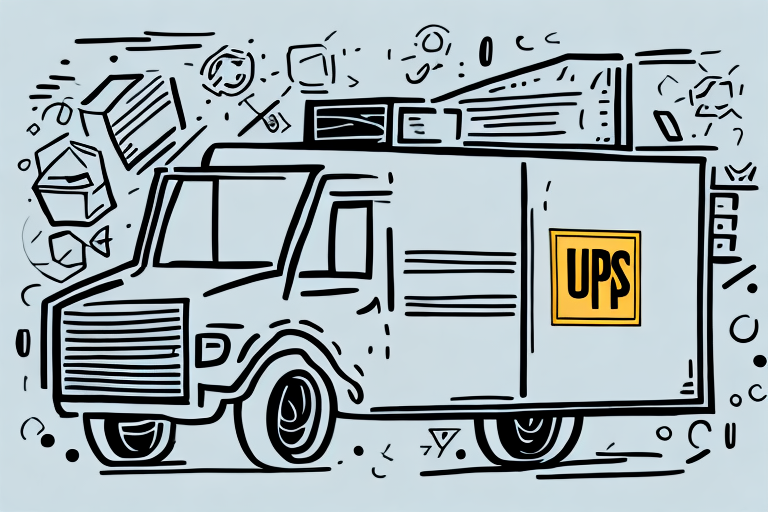Understanding UPS Shipping Rates from A to Z
In today's fast-paced world, shipping packages has become an essential part of daily life. Whether you're a small business owner or an individual looking to send a package to a loved one, understanding shipping rates and services is crucial. UPS Shipping is one of the most popular shipping carriers in the world, offering a wide range of packages and services to both individuals and companies. In this article, we'll take a comprehensive look at UPS Shipping rates from A to Z. Let’s dive right in!
What are UPS Shipping Rates and How Do They Work?
UPS Shipping rates are the fees charged by UPS for their shipping services. These rates are determined by various factors, including:
- Package Dimensions and Weight: Larger and heavier packages incur higher shipping costs.
- Destination: Shipping to remote or international locations may be more expensive.
- Shipping Speed: Faster delivery options, like overnight or two-day shipping, cost more than standard or ground shipping.
UPS offers a variety of shipping services such as overnight, two-day, ground, and standard shipping. The cost of each service varies based on speed and distance. It's essential to check the current rates on the UPS website or contact their customer service, as rates are subject to change. Additionally, UPS provides discounts for frequent shippers and bulk shipments, making it a cost-effective option for businesses and individuals alike.
When shipping internationally, UPS rates can be higher due to customs fees and taxes. Understanding the customs regulations of the destination country is crucial to avoid unexpected charges. UPS offers international shipping services to simplify the process, ensuring your package arrives on time and in good condition.
The Different Factors that Affect UPS Shipping Rates
Several factors determine UPS shipping rates, including:
- Package Weight: Heavier packages cost more to ship.
- Package Dimensions: Larger packages may incur dimensional weight charges.
- Shipping Origin and Destination: Longer distances increase shipping costs.
- Shipping Speed: Faster delivery options are more expensive.
- Type of Service: Specialized services like freight or temperature-controlled shipping may cost more.
For example, shipping a package within the same state is less expensive than shipping across the country or internationally. Similarly, overnight shipping is significantly more expensive than standard shipping. Understanding these factors can help you make informed decisions to optimize your shipping costs.
How to Calculate Your UPS Shipping Costs
Calculating your UPS shipping cost is straightforward:
- Weigh your package and measure its dimensions.
- Visit the UPS Rate Calculator.
- Enter the required information, including weight, dimensions, origin, destination, and desired shipping speed.
- Review the estimated shipping costs based on the selected service.
Creating a UPS account can provide access to discounted rates based on your shipping volume and frequency. Remember that UPS shipping rates fluctuate, so it's advisable to check the rate calculator before sending a package. Additionally, consider the destination of your package, as rates vary for domestic and international shipments.
UPS also offers various shipping tools and resources to streamline your shipping process, including scheduling pickups, tracking packages, and printing shipping labels. Utilizing these tools can save you time and money on your shipping needs.
Tips for Reducing Your UPS Shipping Costs
Reducing your UPS shipping costs can be achieved through several strategies:
- Negotiate with UPS: If you're a frequent shipper, you may qualify for discounted rates based on your shipping volume and frequency.
- Use a Shipping Consolidation Service: Consolidating shipments reduces the number of packages sent and takes advantage of volume discounts.
- Choose the Right Packaging: Selecting appropriate packaging can minimize weight and size, reducing shipping costs. Use lightweight materials like bubble mailers for small items and smaller boxes or envelopes to avoid dimensional weight charges.
- Leverage UPS Online Tools: Use UPS's online tools to estimate shipping costs, track shipments, and manage expenses efficiently.
Understanding the Different Types of UPS Shipping Services Available
UPS offers a wide range of shipping services to meet diverse needs:
- Overnight Shipping: Fastest delivery option, ideal for time-sensitive packages.
- Two-Day Shipping: Delivers within two business days.
- Ground Shipping: Most affordable option for less urgent shipments.
- Standard Shipping: Balances cost and delivery speed.
In addition to standard services, UPS provides specialized services such as:
- Freight Shipping: Suitable for large and heavy items.
- International Shipping: Facilitates overseas shipments with customs support.
- Temperature-Controlled Shipping: Ideal for perishable goods like food and medicine.
These specialized services may come with additional costs and requirements, so it's best to consult with UPS representatives to determine the most suitable option for your specific needs.
Choosing the Right UPS Shipping Service for Your Needs
Selecting the appropriate UPS shipping service involves evaluating several factors:
- Shipment Weight and Size: Ensure the service accommodates your package dimensions and weight.
- Delivery Timeframe: Choose a service that meets your delivery urgency.
- Budget: Balance cost with the required shipping speed.
For instance, overnight shipping is ideal for urgent deliveries but comes at a higher cost, while ground shipping is cost-effective for non-urgent shipments.
Understanding the Different UPS Shipping Zones and Their Rates
UPS divides destinations into specific shipping zones based on distance. The farther the destination, the higher the shipping cost. Understanding these zones helps in accurately calculating shipping rates. You can refer to the UPS Zone Chart to determine the zone for your shipment and estimate costs accordingly.
Comparing UPS Shipping Rates to Other Carriers
Comparing shipping carriers like FedEx, USPS, and DHL can help ensure you're getting the best deal on your shipping costs. Each carrier offers different services and rates, so it's essential to:
- Evaluate Service Offerings: Compare the range of services each carrier provides.
- Assess Reliability and Speed: Consider delivery times and reliability of each carrier.
- Analyze Costs: Compare rates based on your specific shipping needs.
By conducting a thorough comparison, you can select the carrier that best aligns with your shipping requirements and budget.
Tips for Negotiating Better UPS Shipping Rates
Negotiating better UPS shipping rates can lead to significant savings, especially for small business owners and frequent shippers. Here are some tips:
- Understand Your Shipping Volume: Know your average shipping volume and frequency to leverage during negotiations.
- Research Competitor Rates: Use this information as a bargaining tool to negotiate competitive rates.
- Create a Shipping Plan: Present a clear and organized shipping plan to underline your needs and reliability as a customer.
- Build a Relationship: Establishing a good relationship with your UPS representative can lead to better negotiation outcomes.
Common Misconceptions About UPS Shipping Rates and Services
There are several misconceptions about UPS shipping rates and services:
- UPS is Always the Most Expensive Carrier: While UPS rates can be higher, they offer reliability and speed that may justify the cost. It's essential to compare services based on your specific needs.
- Shipping Insurance is Unnecessary: Shipping insurance is highly recommended to protect your package in case of damage or loss. It provides peace of mind and financial protection.
- All UPS Services are the Same: UPS offers a variety of services tailored to different needs, each with its own pricing and features.
Strategies for Saving Money on Large-Scale or Frequent Shipments
For business owners and frequent shippers, saving on shipping costs is vital. Consider the following strategies:
- Consolidate Packages: Combine multiple shipments into a single package to take advantage of volume discounts.
- Negotiate Better Rates: Use your shipping volume as leverage to secure discounted rates with UPS.
- Utilize Shipping Software: Implementing shipping software can enhance efficiency and reduce errors, leading to cost savings.
- Track and Analyze Shipping Costs: Regularly monitor your shipping expenses to identify areas for improvement and adjust your strategies accordingly.
Understanding the Insurance Options Available for Your UPS Shipments
Protecting your shipments is crucial, and UPS offers several insurance options to provide peace of mind:
- Declared Value: Allows you to set a maximum value for your package, ensuring coverage in case of loss or damage.
- Additional Insurance: Available for high-value items and international shipments, offering extended protection beyond standard coverage.
Understanding these insurance options helps you choose the right coverage level to safeguard your packages effectively.
How to Track Your UPS Shipments and Monitor Their Progress
Tracking your UPS shipments is essential to monitor their progress and ensure timely delivery. UPS provides various tracking options:
- Online Tracking: Use the UPS Tracking tool to monitor your package's status in real-time.
- Email and Text Alerts: Sign up for notifications to receive updates on your shipment's progress.
- UPS Mobile App: Track packages and receive alerts directly on your smartphone.
Regularly tracking your shipments helps detect any potential issues early, allowing you to address them promptly.
Preparing Your Packages for Shipment: Tips and Best Practices
Properly preparing your packages ensures they arrive safely and undamaged. Follow these best practices:
- Use High-Quality Packaging Materials: Invest in sturdy boxes, bubble wrap, and packing peanuts to protect your items.
- Correctly Label Your Package: Ensure labels are clear and legible, including the recipient's address and contact information.
- Protect Fragile Items: Use additional padding, such as bubble wrap or packing peanuts, to safeguard delicate items.
- Follow UPS Packaging Guidelines: Adhering to UPS's guidelines helps prevent any issues during shipping.
By implementing these tips and best practices, you can enhance the safety and reliability of your shipments.
Understanding UPS shipping rates and services is crucial for anyone who ships packages regularly. By following the tips and strategies outlined in this article, you can save money on shipping costs and ensure your packages arrive safely and on time. Thank you for reading and happy shipping!




















